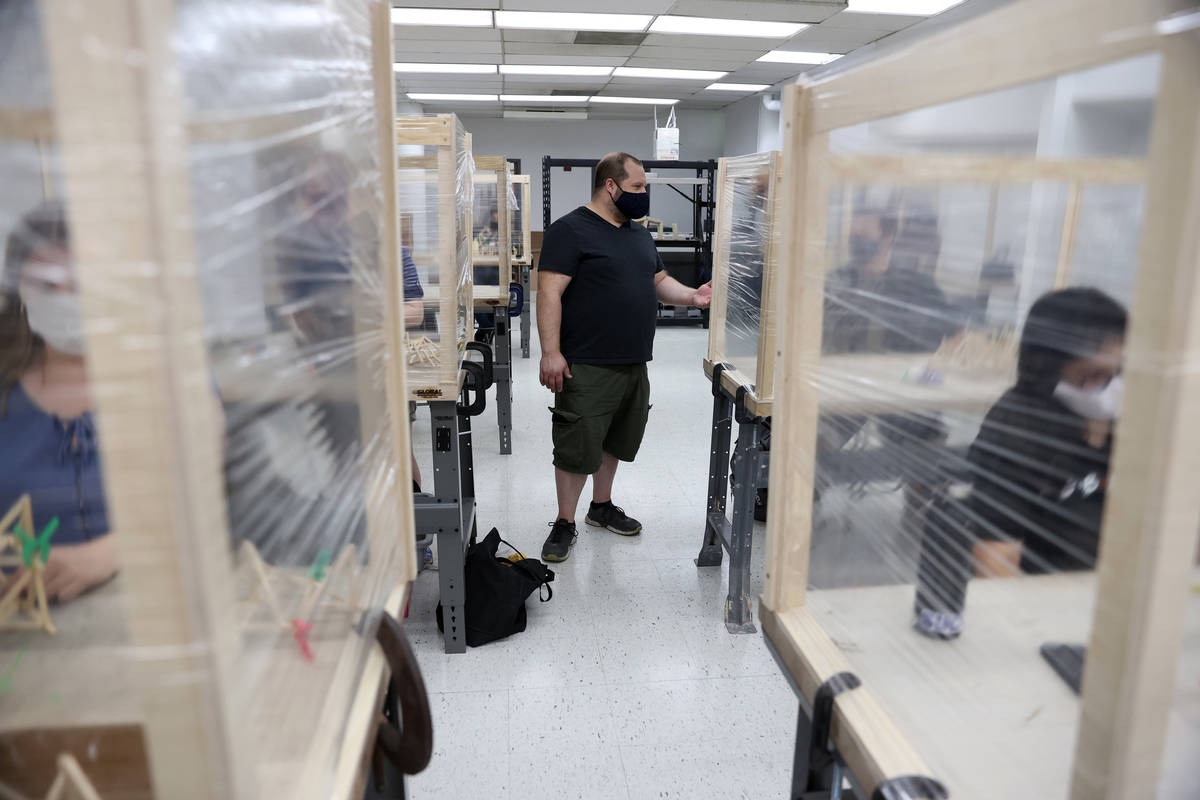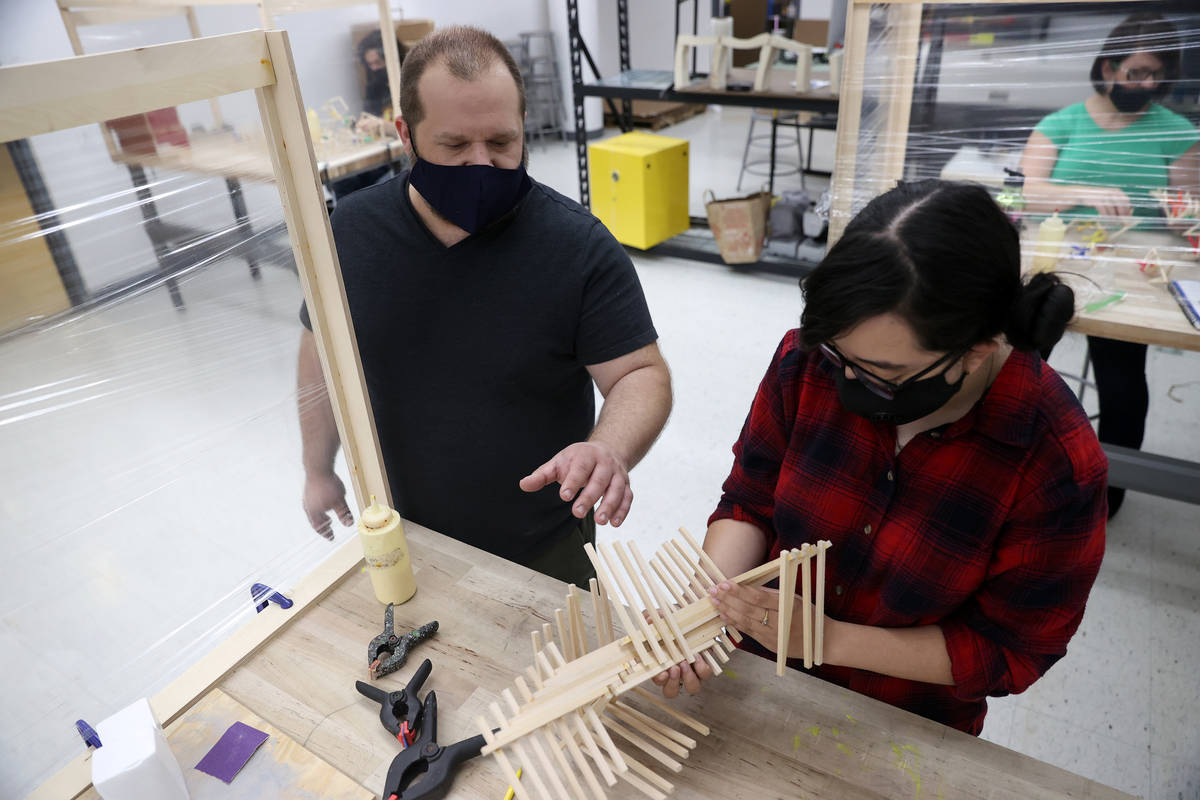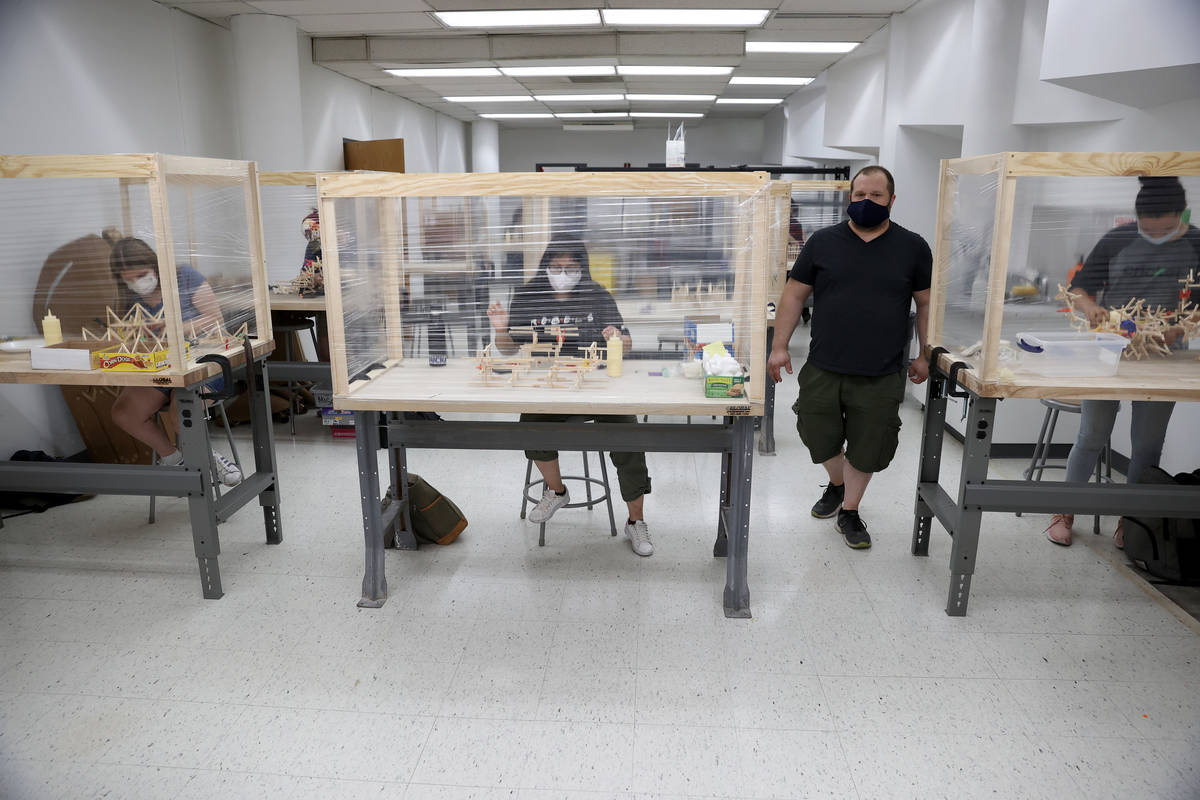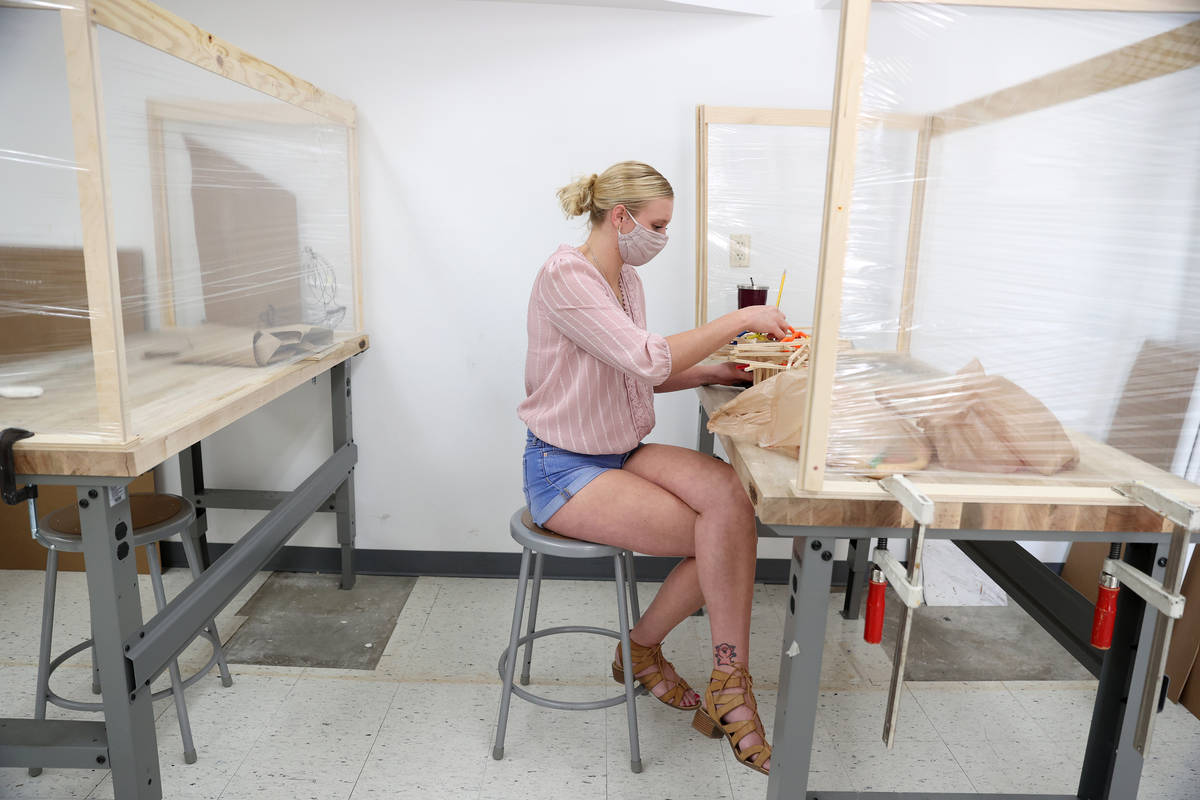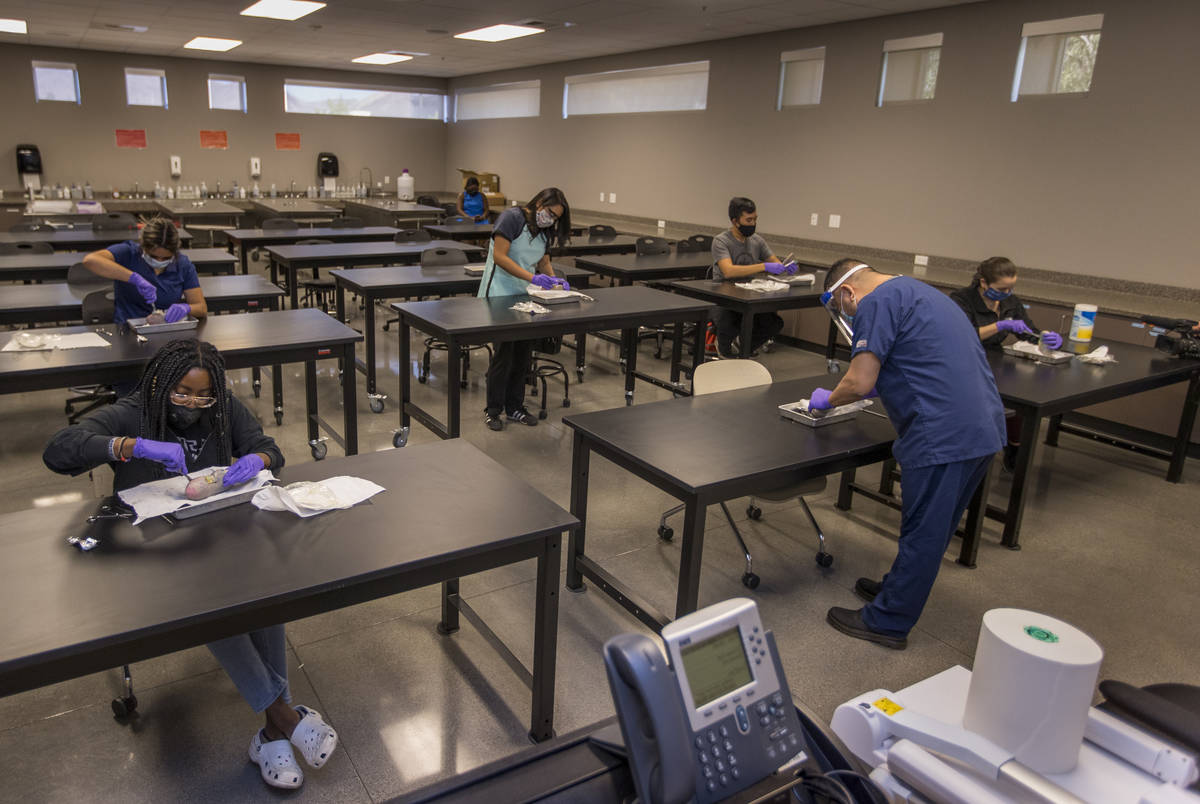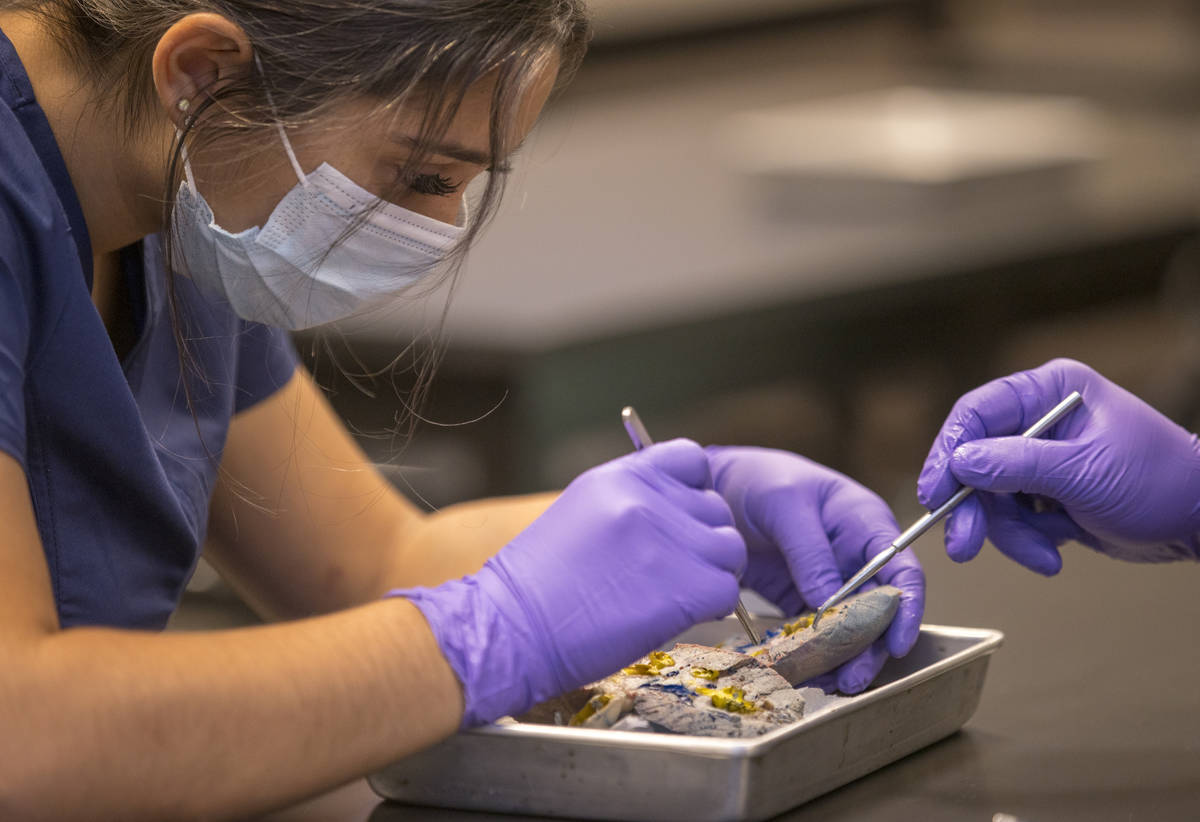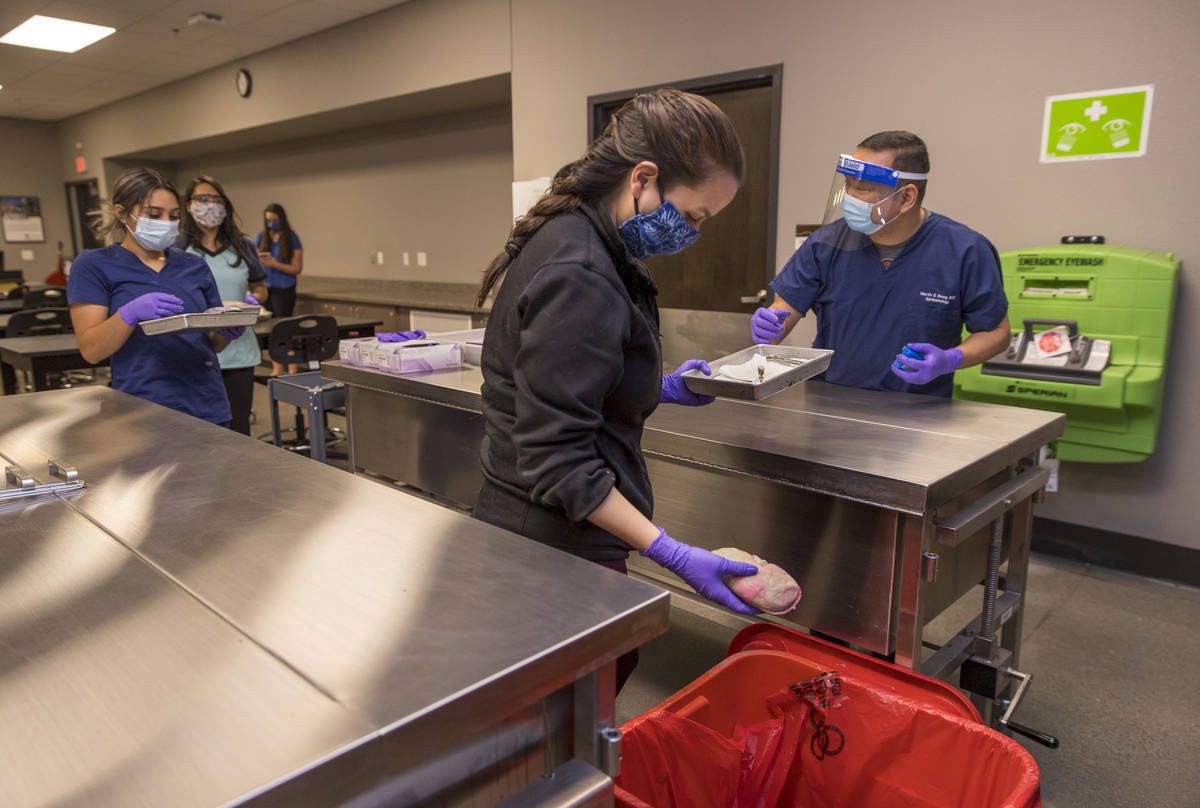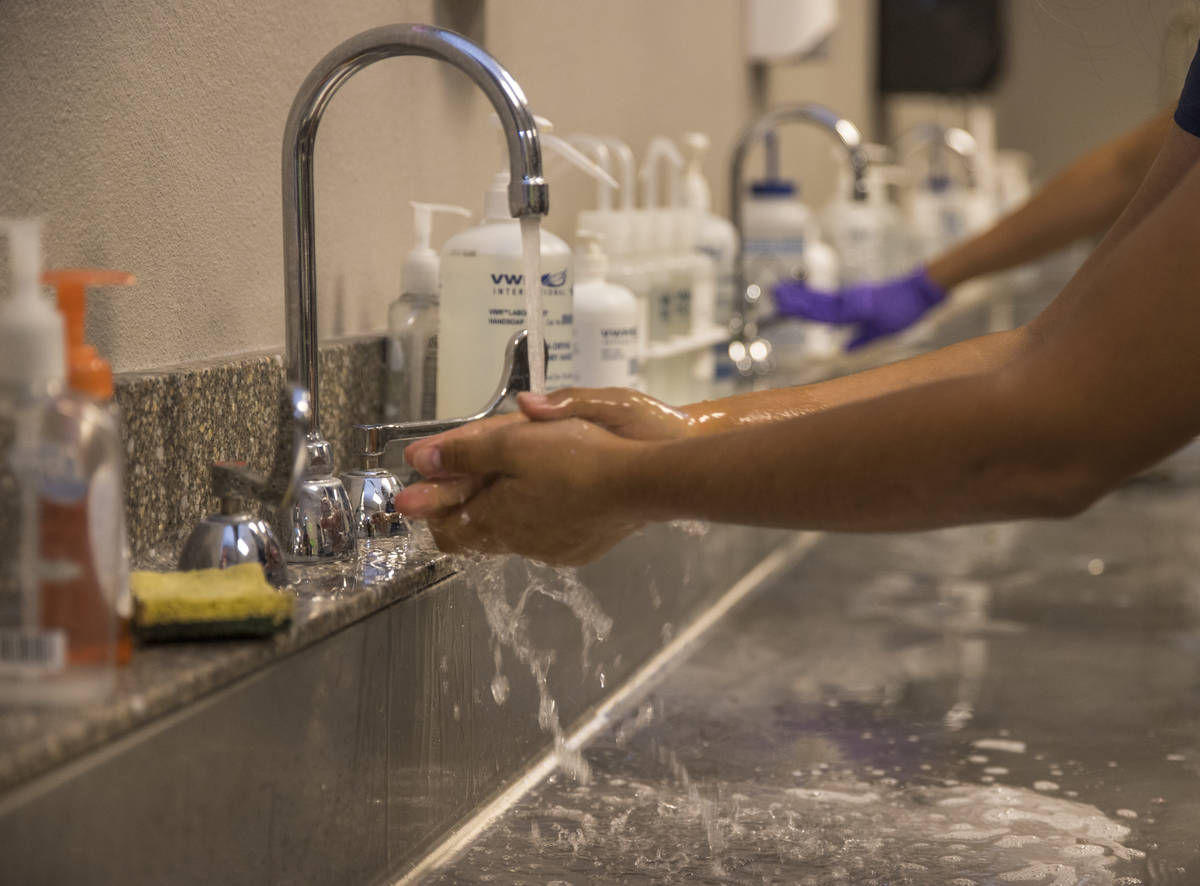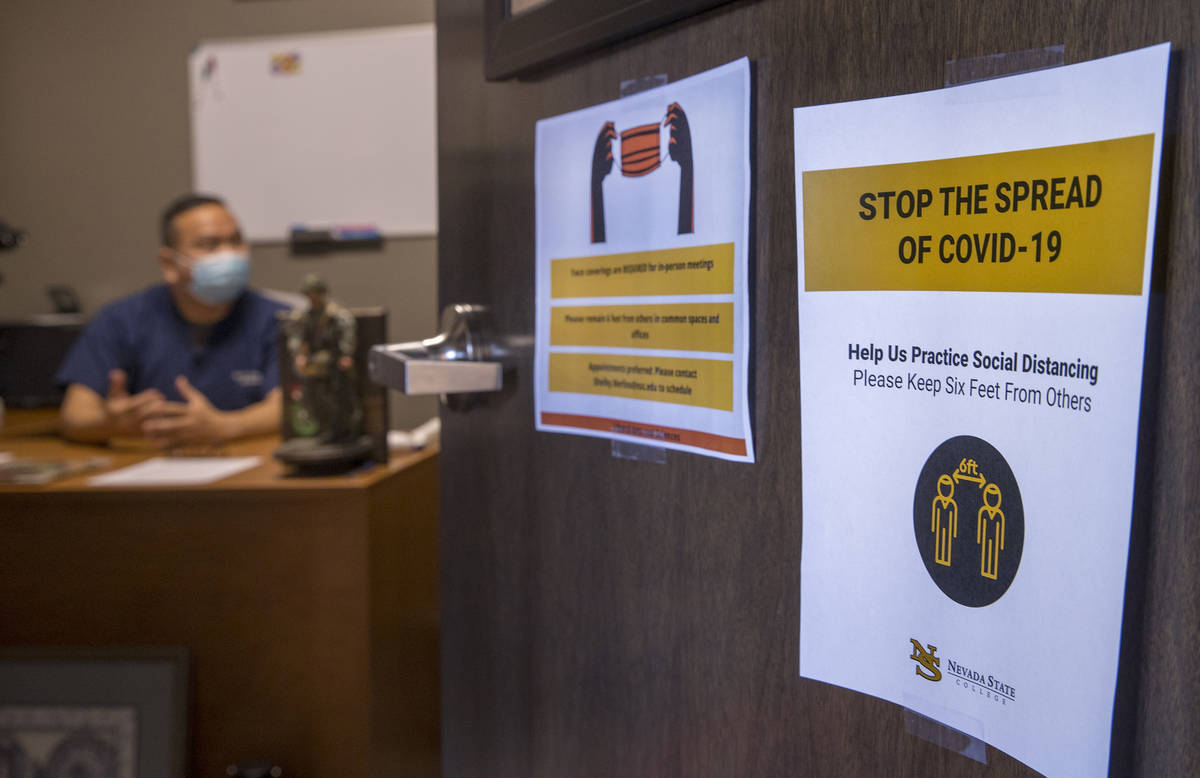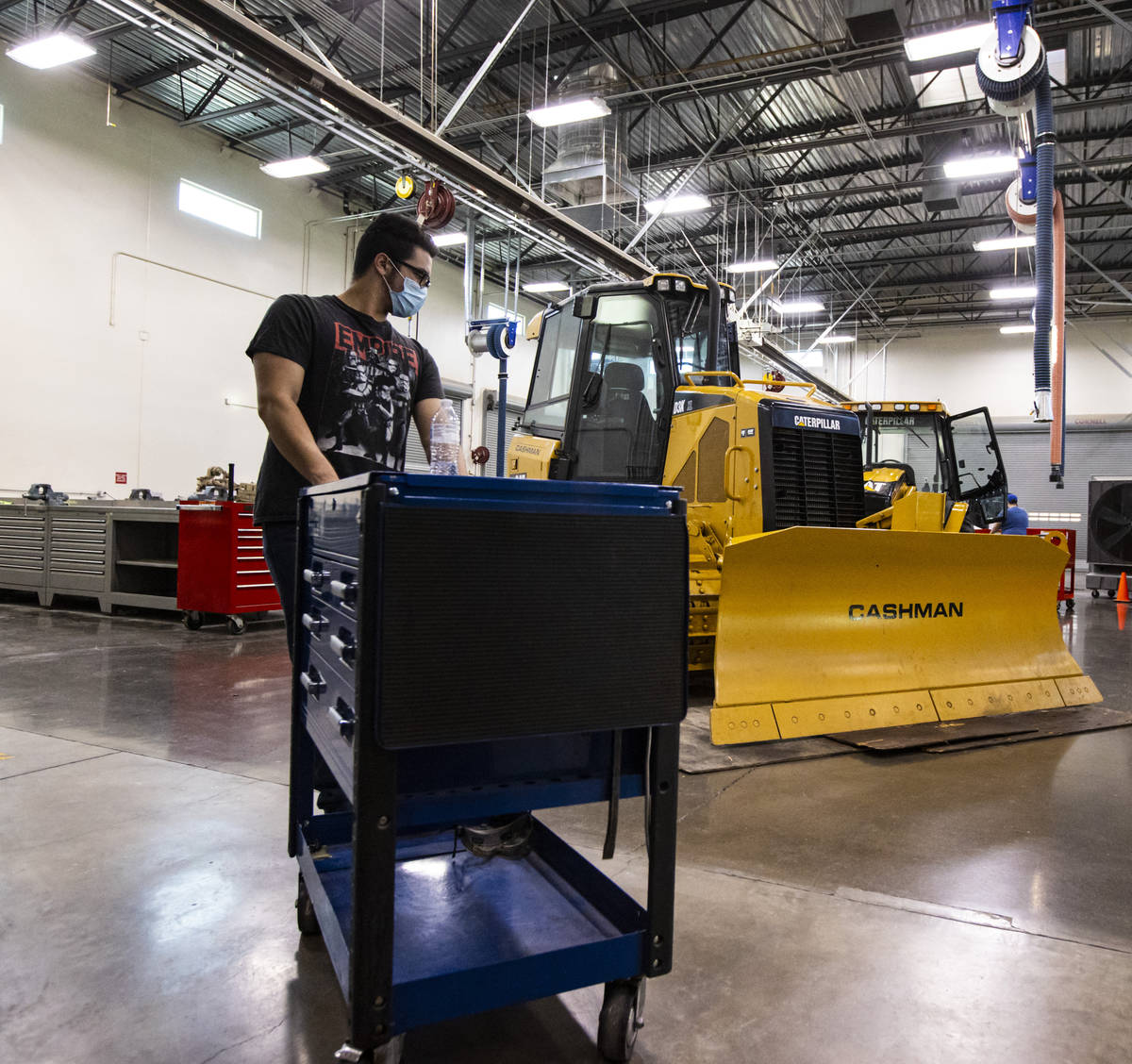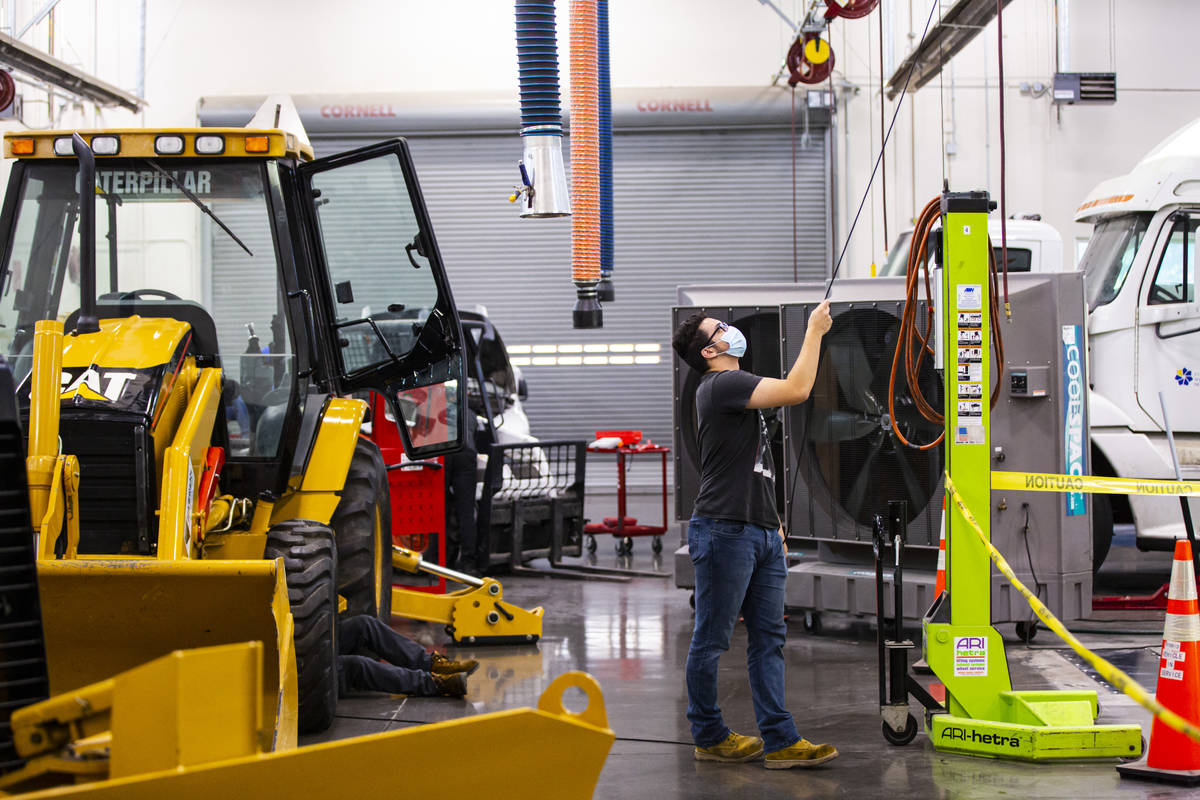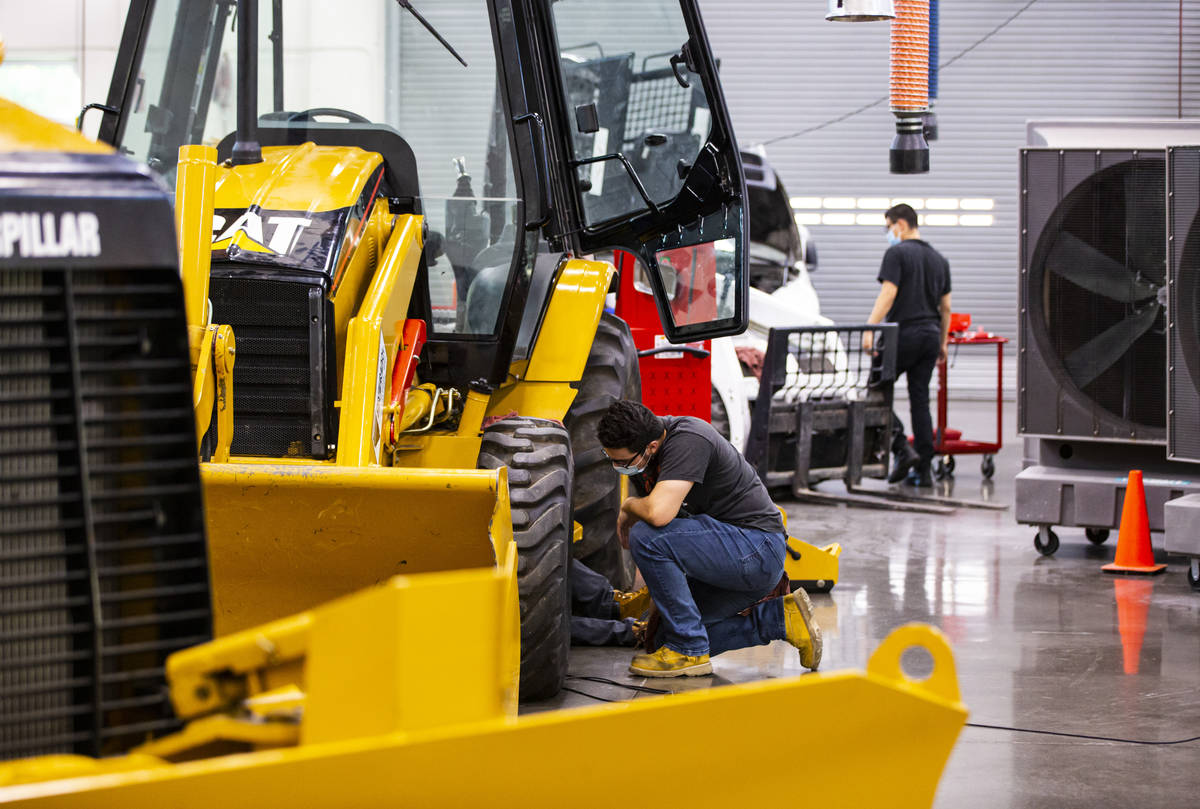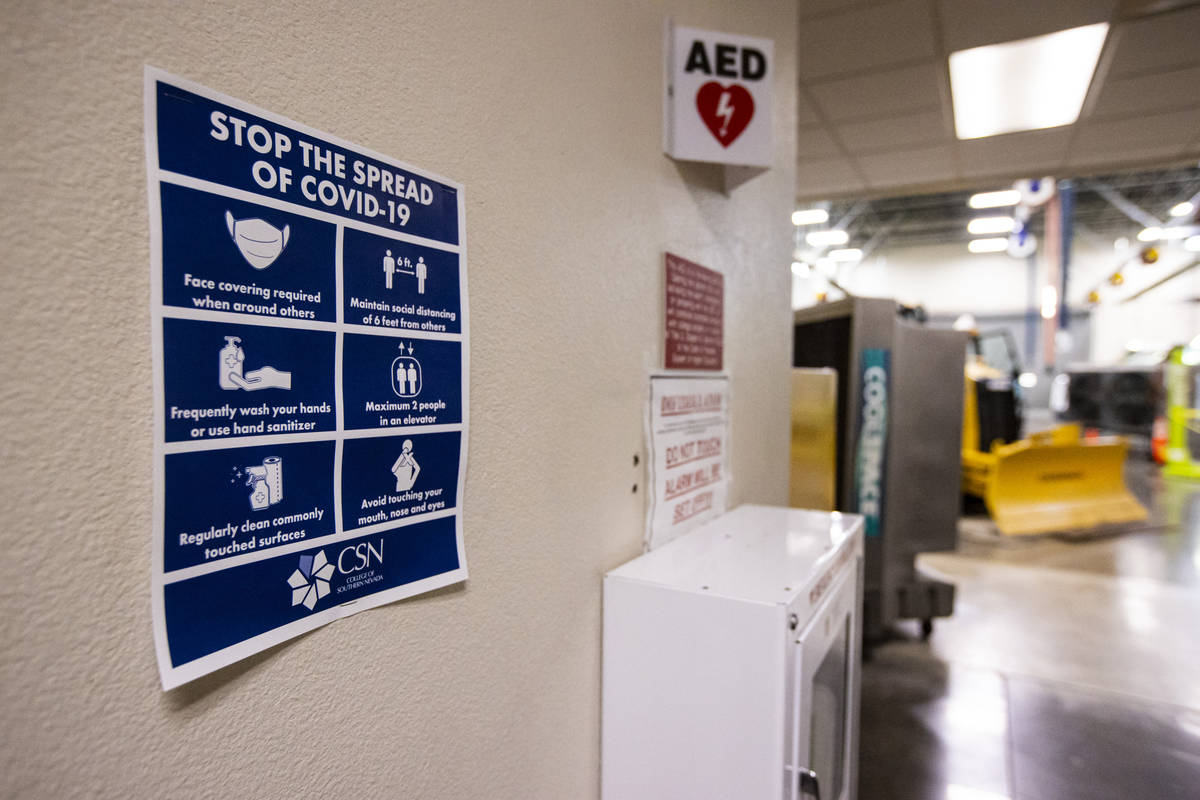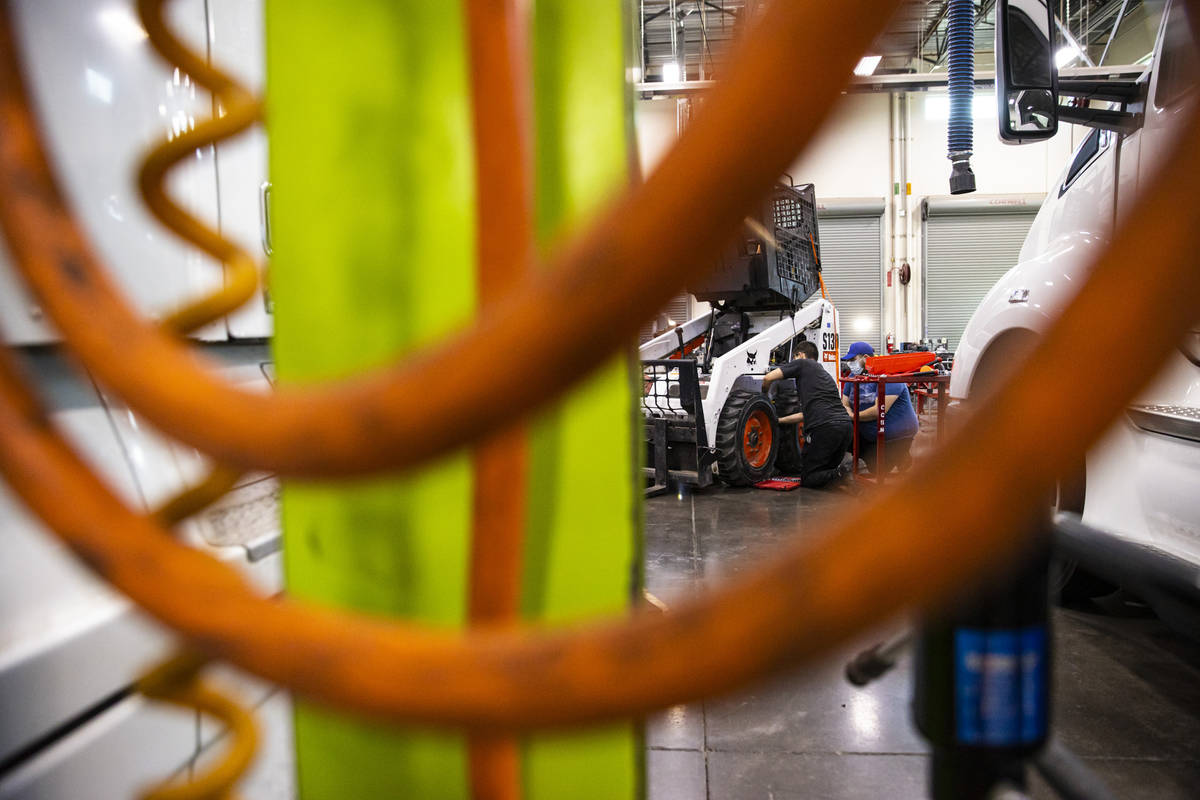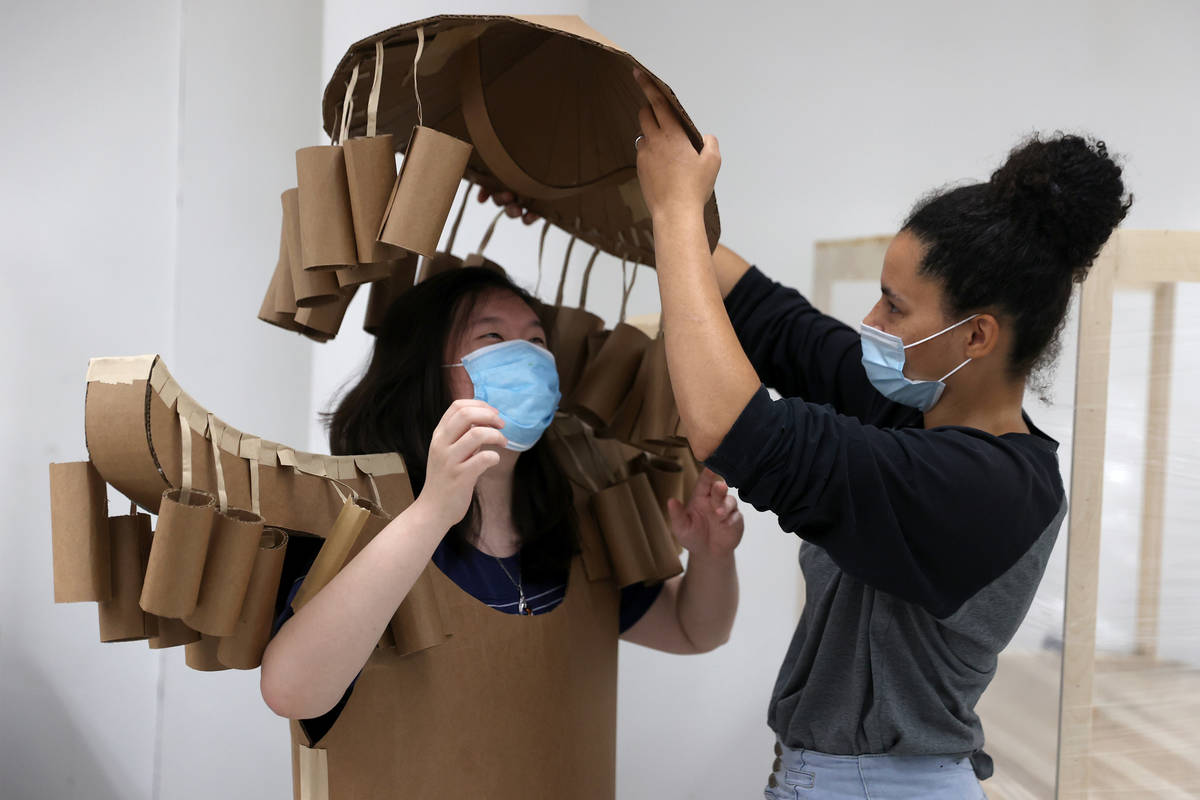An inside look at ‘challenging’ in-person classes at UNLV, NSC, CSN
Dave Rowe gave his UNLV art students a timely assignment on their first day of class this summer: Build a protective barrier around your work table to protect against COVID-19 transmission.
He cut pieces of scrap wood for students to use and pulled out rolls of plastic stretch wrap he had on hand. One of the parameters for the project is it couldn’t cost anything since budgets are tight, said Rowe, an associate professor in sculptural practices.
The project was a good fit for Design Fundamentals II-3D. The five-week course, which ended Friday, teaches students to create artwork by hand rather than using a computer.
“We actually make things,” Rowe said.
Rowe was among the instructors who returned to the classroom for in-person teaching this summer under a Nevada System of Higher Education policy allowing them on a limited basis starting July 1. Since then, nearly 100 such classes — typically, science labs and career and technical programs — have quietly been held at Las Vegas Valley campuses, providing a semblance of educational normalcy in the midst of the coronavirus pandemic.
The Review-Journal visited three of the classes this month to see how they operated.
‘Been a challenge’
Rowe said he enjoys teaching summer classes, as the atmosphere tends to be a bit more relaxed and informal. But this summer wasn’t business as usual.
“Well, it’s definitely been a challenge,” he said Thursday as students worked in class. “We social distance as much as we can do it.”
At the College of Southern Nevada — a community college with three main campuses — 52 classes met in-person this summer, spokesman Richard Lake said. Seven of those were hybrid, meaning they included a mix of in-person and remote instruction.
CSN received state permission in May to resume limited on-campus instruction for career and technical programs such as emergency medical technology and health sciences. That allowed students to get back into labs to complete spring semester competency requirements.
At UNLV, the third summer term, which began July 13 and ended Friday, included only 35 class sections scheduled for in-person instruction. All others (1,614 sections) were offered online.
For fall, the university plans to offer 80 percent of its classes in a remote format.
Nevada State College in Henderson had only 10 classes this summer that met on campus — all of which were lab classes. This fall, the college plans to offer about 70 percent of its classes remotely and 30 percent in a hybrid fashion with in-person and online components.
Gisela Kobayashi, a 24-year-old pre-nursing student at NSC, took an anatomy and physiology class this summer.
She said she only went to campus twice for labs and the rest of the instruction was online. There were only six or seven students per lab, she said.
‘It’s about keeping people safe’
“We were spaced out and stuff,” she said. “We were all wearing masks and no-one had a problem.”
What she didn’t like about the summer class experience was that “there wasn’t a sense of community.”
But Kobayashim, who said she did become friends with a few classmates after meeting them in-person during a lab, understands why many classes are being offered online only.
“You know, it’s a rough time with COVID,” she said.”At the end, I didn’t mind the online. It’s about keeping people safe.”
Dr. Hon-Vu Duong has been teaching at Nevada State College for 15 years, including every summer. But this year, the campus was much quieter.
“It almost feels like a different world,” Duong said recently before teaching an evening lab at the college’s academic building. “It’s almost like a ghost town.”
The lab — with only five students in attendance — was for an anatomy and physiology II class. On the agenda: dissecting a pig kidney and conducting a urinalysis.
The class was offered in a hybrid format, with the lecture portion — and even some labs — taught online and students visiting campus a few times for dissections.
When Duong’s students arrived, they all wore masks and stood in a hallway at least 6 feet apart until it was time to enter the classroom.
Duong wore a face mask and a face shield, but said he didn’t feel the need to wear a protective gown.
No concerns voiced by students
He noted that he hadn’t heard any concerns from his students about in-person labs and they know what to expect. “Actually, the students are very excited to come to campus,” he said. “I think they are excited to see their classmates.”
During the in-person session Aug. 3, Duong greeted his students and explained the two labs they’d complete that evening.
“The kidneys are back here,” he told students, directing them to the pig organs at the back of the classroom.
Students snapped on purple latex gloves picked up their specimens and proceeded to separate tables. Duong’s voice was slightly muffled due to his face mask, but he was still clearly audible near the front of the classroom where students were sitting.
After students were done with the dissection, they took off their gloves and washed their hands.
There was a canister of disinfecting wipes on one student’s desk and Duong asked her if he could use them. He handed them out and each student wiped off their table in preparation for the next lab activity of the night.
For the urinalysis lab, students passed around the containers of fake urine among the classroom. A few of the students were wearing gloves.
Kobayashi, who attended a different anatomy and physiology class taught by Duong, said she initially felt like she had no time for the class and was extremely stressed. But once she got used to the mostly online format, “It was not as big of a deal.”
“I feel like it’s going to prepare us for what’s coming in the fall,” she added.
Kobayashi said she agrees with holding lectures online so there aren’t as many people on campus, but “the labs are the toughest part” and should be held in-person.
She said she struggled with textbook pictures because they’re not 3D models and that made it hard to prepare for exams. “If we had any time at all with these models, it would have been a lot easier,” she said
Swamp coolers and foggy face masks
At the CSN’s North Las Vegas campus, diesel hydraulics instructor John Ventura heads to a classroom sink frequently to wash his hands between helping students with their projects. It’s a necessity during the pandemic — especially in a class that relies heavily on hands-on lessons.
With lab time making up about 85 percent of the class, it would be tough to try to replicate the experience online, Ventura said.
“Pictures only do so much good, you know?” he said.
It was humid in the diesel lab, thanks to swamp coolers. So it didn’t take long for a student or instructor to end up with a moist face mask.
At the beginning of class, students rolled in carts with the tools they’d need. Each toolbox was sealed with green tape to indicate the tools inside were clean. Tools are again disinfected after each class.
Occasionally, a student stuck out their arm as a reminder to classmates to stay at least 6 feet away. But sometimes, it was necessary to get closer than that, such as when moving heavy equipment.
There’s a sign just after entering the work space with instructions on how to stop the spread of COVID-19. And when students are washing their hands, Ventura will sometimes remind them if they don’t spend enough time on the task by saying: “That’s not 20 seconds.”
With summertime heat combined with wearing a mask, students and Ventura watched out for each other, making sure everyone was staying hydrated and wasn’t showing signs of a heat-related illness. And they also took breaks outside to get fresh air.
Student Samuel Branch, 21, initially expected the diesel hydraulics class would be online, but said the in-person version was engaging and that he felt comfortable on campus.
There were challenges. Branch said wearing a mask led to his glasses fogging up and it was sometimes hard to see what he was doing.
Also, maintaining 6 feet of social distancing at times made it hard to see what his classmates and Ventura were doing, he said.
This fall, Branch is taking three diesel classes and said he’s not 100 percent certain yet whether they’ll be online, in person or a hybrid format.
The COVID-19 pandemic adds a degree of difficulty to the diesel program, Ventura said, but noted students are serious about getting the job done.
Students are preparing to become entry-level technicians, Ventura said, noting he has former students who are now making six-figure salaries by age 25. “I hate to be clique, but it’s blood, sweat and tears.”
Some students reluctant to return
The Design Fundamentals II-3D class that Rowe taught this summer is required for art and graphic design majors at UNLV. The five-week class, which met for 2 1/2 hours five days a week, covered material that is typically taught over a full semester.
A popular assignment among students this summer was identifying a fear they have — some they chose were zombies, global warming and silence — and creating cardboard body armor to protect themselves against it.
Students paid a $40 studio fee for the class, which was used to buy materials. If students shared any common tools or equipment, items were sanitized after each use. And Rowe said he periodically wipes down door handles and faucets.
Inside Rowe’s classroom at UNLV’s Alta Ham Fine Arts Building, a sign reminds students to “maintain 6 feet from others” in order to help stop the spread of COVID-19. Rowe’s classroom opens up to an outdoor courtyard, which his class used this summer for critiques of their work.
Rowe said he feels there’s no replacement for him for in-person instruction. “I’m very used to being in front of the students.” Teaching online has a different rhythm and it’s a different way of instructing, he said.
He’s teaching an online seminar class in the fall, but said his understanding is that studio art classes will be in-person on campus. The maximum number of students per studio class has been reduced from 18 to 15 in order to ensure social distancing.
Rowe said he has received emails from students signed up for his fall classes who are concerned about coming to campus and have asked if there’s a way to participate online.
The challenge with studio art classes is figuring out how to get students materials they need if they’re not coming on campus, Rowe said, noting many of the classes are extremely technical and require special equipment.
“I can’t ask each student to go out and buy a welder,” he noted. “Right now, I’m trying to be as flexible as possible.”
Contact Julie Wootton-Greener at jgreener@reviewjournal.com or 702-387-2921. Follow @julieswootton on Twitter.
COVID-19 cases on campuses
Las Vegas Valley college and university websites include information about confirmed cases of COVID-19 among employees, students and visitors, including when the school was notified and when the person was last on campus.
Since mid-June, the College of Southern Nevada has been notified of 32 cases among people who'd been on campus this summer, according to its website.
One of the updates - posted Aug. 5 - says the college was notified of 21 cases between Aug. 4 and 7. "All individuals are currently self-quarantined," according to the update. "They were last at the Water Street facility on August 3."
Nevada State College has been notified of 15 cases since July 6, although seven of them hadn't been on campus this summer, according to its website.
UNLV has been notified of about 60 cases since mid-June among people who had been on campus this summer, according to its website.
There is no indication that any of these cases resulted from in-person learning.
— Julie Wootton-Greener



